
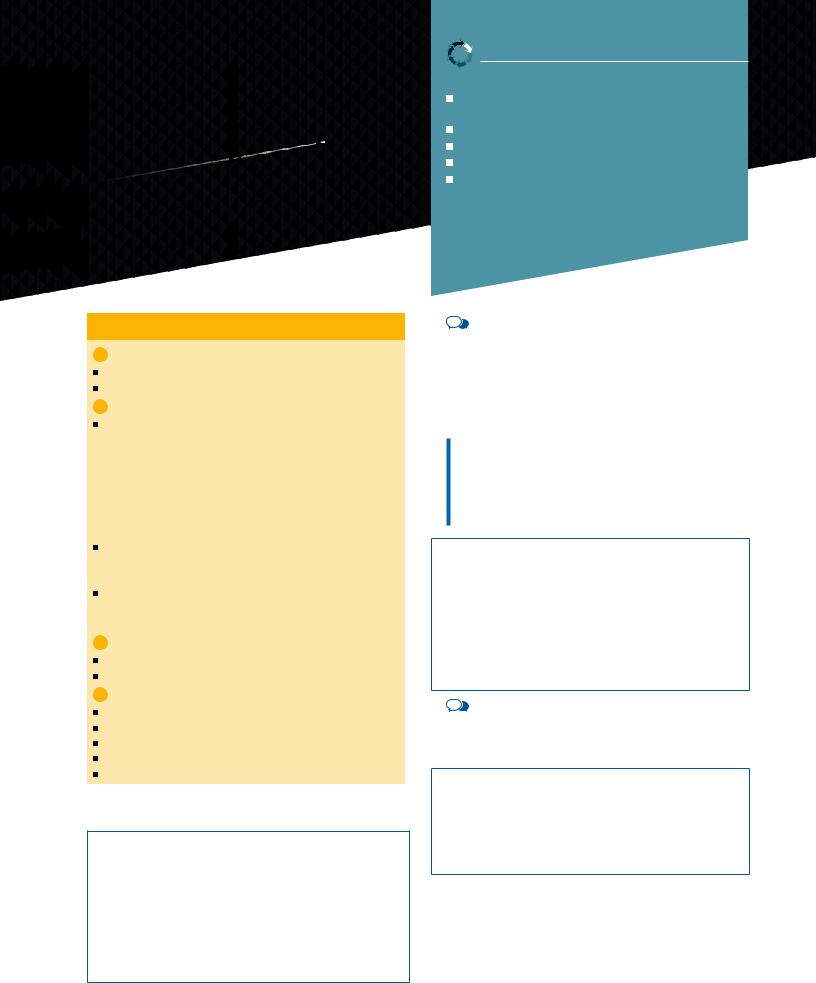





 UNIT
UNIT





 Discovery
Discovery 




 invention
invention
11 |
UNIT OBJECTIVES |
|
At the end of this unit, students will be able to: |
||
understand texts and conversations about discoveries |
||
and inventions |
||
discuss attitudes to discoveries and inventions |
||
and |
describe how discoveries were made |
|
ask for and give directions in a building |
||
|
||
|
write a post (for a website) expressing an opinion |
UNIT CONTENTS
G GRAMMAR
Defining relative clauses
Articles
V VOCABULARY
Compound nouns: science fiction, cash machine, street lights, television programme, road sign, shoe shop, address book, bookshelf, ticket o ice, key ring, mountain top, mountain climbing, rock climbing, rock star, TV star, TV screen, computer screen, computer game, co ee cup, tea cup, tea bag, shopping bag, shopping centre, city park, car park, car door, kitchen door, kitchen knife, bread knife, bottle top
Adverbials: luck and chance: accidentally, amazingly, as expected, by chance, fortunately, luckily, on purpose, surprisingly, unfortunately
Wordpower: preposition + noun: at home, at university, by chance, for sale, in advance, in hospital, in love, in prison, in school, on business, on purpose, on time
P PRONUNCIATION
Word stress
Sound and spelling: /ɜː/ /ɔː/
C COMMUNICATION SKILLS
Explaining what technology does
Talking about discoveries
Asking for and giving directions in a building
Writing a web post Giving opinions
GETTING STARTED
 OPTIONAL LEAD-IN
OPTIONAL LEAD-IN
Books closed. Write robot on the board. Say: Robots can say words, but they can’t have a conversation. In pairs, students think of other things that robots can or can’t do, e.g. Robots can walk, pick up something, take messages, clean floors, rescue people at sea, travel into space, explore inside volcanoes. Robots can’t feel emotion, take care of someone, breathe, think, learn new skills.
Ask students to share their ideas with the class. Encourage them to give examples if they know of any.
a Ask students to look at the picture and tell you what they can see. In pairs, students read and discuss the questions. Monitor and help students with any vocabulary they may need, e.g. bark, wag its tail, fetch, dog hairs, take the dog for a walk, feed, vet, charge up batteries. Ask students to share their ideas with the class. If you wish, give students information from the Culture notes below.
Suggested answers
1playing with a ball
2to let him have some fun / for company
3perhaps – it would be warm and friendly; perhaps not – have to feed it, it makes a mess, it needs walks
4nothing; it can’t lick you, communicate

 CULTURE NOTES
CULTURE NOTES
The picture shows the AIBO, an artificial intelligence robot. Several models of the robot dog were produced by Sony between 1999 and 2006. The AIBO had many abilities, including understanding commands, reacting to touch, chasing a ball, barking, dancing and even walking to a docking station to charge its own batteries. The AIBO was the first consumer robot to be offered to the public and the first model cost around $2000.
b Students discuss the questions in pairs and report back to the class. Write the best ideas on the board. Ask the class to vote for their favourite ‘new robot’ from the descriptions on the board.
 EXTRA ACTIVITY
EXTRA ACTIVITY
Ask the class: Do you think robots will be good for family life? Why / Why not? Divide the class into two groups. Ask one group to think of reasons why robots will be good, and the other group to think of reasons why they won’t. Ask for reasons from both groups in full group feedback.
UNIT 11 Discovery and invention 147
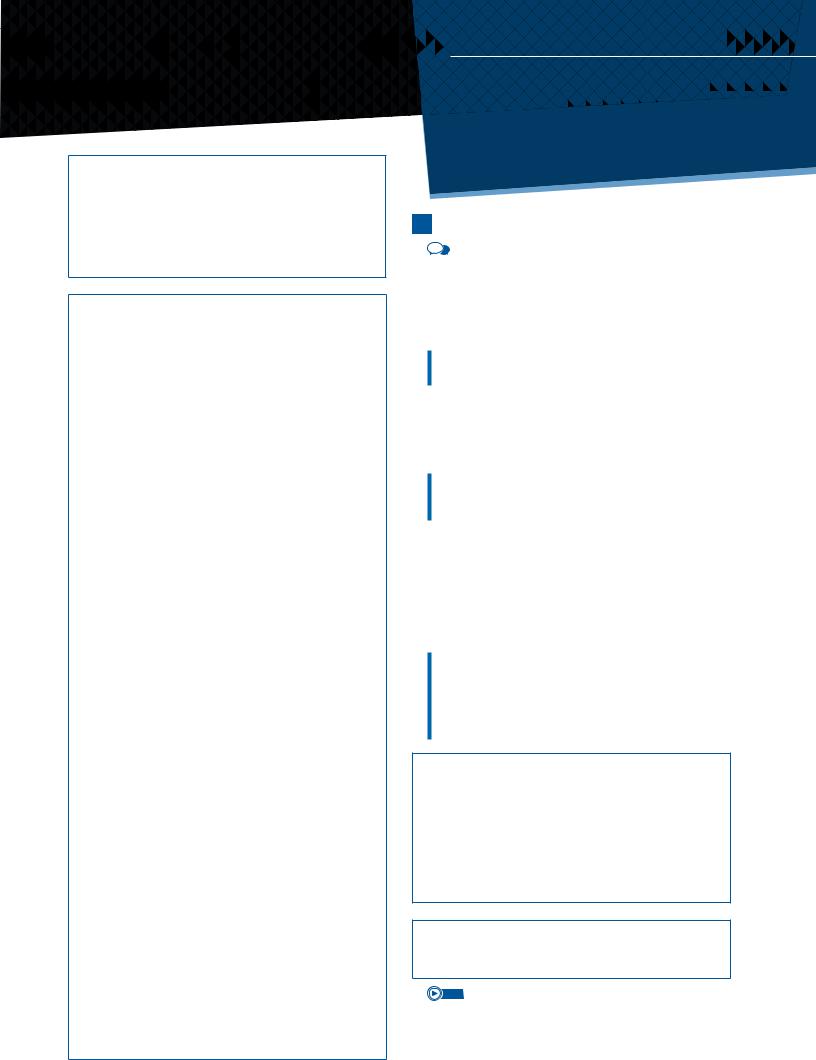



 11A
11A It’s
It’s a
a robot that
robot that











 looks like a
looks like a human
human
 OPTIONAL LEAD-IN
OPTIONAL LEAD-IN
Books closed. Ask students if they have been to see a film at the cinema recently and find out from them what films are currently on. Ask students to tell you the names of the films, but also the genre, e.g. comedy, drama, animated film, thriller, documentary, science fiction film. Find out if any students have a particular film genre they enjoy.

 CULTURE NOTES
CULTURE NOTES
Books and films in the science fiction genre speculate about future events and technology, and their effects on the human race, but the stories are not fantasy. The stories always show a good understanding of scientific principles. Some of the most popular science fiction authors are Aldous Huxley (Brave New World), H.G. Wells (The Invisible Man), and Arthur C. Clarke (2001: a Space Odyssey). Return from the Stars by Polish author Stanislaw Lem tells the story of an astronaut returning to Earth to find it completely changed. It was translated into English in 1980, 19 years after it was first published.
Fahrenheit 451 by American author Ray Bradbury tells the story of a future society where reading or even owning books is illegal. The title refers to the temperature that paper catches fire. There were many ideas in this book which have later become reality including large-screen TVs, in-ear wireless headphones, electronic surveillance and more. The novel has won many awards.
Back to the Future is an extremely successful trilogy of films directed by Robert Zemeckis and produced by Steven Spielberg. The first film was released in 1985 and used state- of-the-art special effects which are now common in action adventure movies. The films starred Michael J. Fox (pictured on SB p.109, top right) who travels in time both to the past and to the future in a car which is adapted into a time machine. A.I. stands for Artificial Intelligence. The film of this name was released in 2001 and was written, directed and produced by Steven Spielberg. It was based on a 1969 short story SuperToys Last All Summer Long by British author Brian Aldiss. The film starred Jude Law and child actor Haley Joel Osment (pictured on SB p.109, top left). Haley Joel Osment plays a child-like robot called David who is the result of a scientist’s experiment to make a robot who can love and be loved.
The Iron Man films are based on the Marvel comicbook superhero (pictured on SB p.109, bottom) who first appeared in comicbooks in 1963. Iron Man 3 (2013) is one of the highestgrossing films of all time. In the films, Robert Downey Jr plays engineer Tony Stark who creates a suit of armour which gives him superhuman strength and the ability to fly. In time the armour becomes part of Stark’s body, turning him into a cyborg.
The film Minority Report (2002) is a science fiction thriller based on a short story by Philip K. Dick of the same name, starring Tom Cruise, Colin Farrell and Samantha Morton. Directed
by Steven Spielberg, this film was one of the first to make extensive use of digital production. The story features precogs, mutated humans who can see into the future. Special precrime police officers try to use this information to prevent crimes being committed.

 At the end of this lesson, students will be able to:
At the end of this lesson, students will be able to:



• use defi ning relative clauses
• read and understand a text about inventions




from science fi ction





• understand a person talking about inventions
• use compound nouns
• talk about new technology
1 READING AND LISTENING
a In pairs, students look at the pictures and the fi lm and book titles on this page and tell their partner what they know about each one. Take feedback and fi nd out which students have read the books or seen the fi lms.
Elicit what they know about them and ask if anyone has both read the book and seen the fi lm. Ask: Did you prefer the book or the fi lm? Why?
Answer science-fiction stories
bAsk students to read the title of the article and guess what it is about (some inventions were fi rst thought of by science fi ction writers, but went on to become a reality). They then read the introduction to check their ideas and to answer the question.
Answer
Both cash machines and e-book readers appeared in stories about thirty to forty years before they were invented.
cAsk students who have seen all or some of the fi lms featured in the article to tell the class what they think were the most interesting technological inventions and gadgets featured in these fi lms. Put these on the board and then ask students to read the article to check if they are mentioned. If not, they should write down the other inventions that are talked about. Check answers as a class.
Answers
Back to the Future II: flying cars
AI: androids / robot children Iron Man: cyborgs
Minority Report: predicting crimes before they happen; personalised advertising
 VOCABULARY SUPPORT
VOCABULARY SUPPORT
android – a robot that is made to look like a person billboard – a very large board on which advertisements are shown, especially by the side of the road
break the law (B2) – do something against the law personalised – make something suitable for the needs of a particular person
psychic – a person who has the ability to predict the future robotic – adjective from robot
 LANGUAGE NOTES
LANGUAGE NOTES
Sci fi is a common abbreviation of science fiction. It can also be abbreviated to SF.
d |
3.34 List the technologies from c on the board and |
|
ask the class if they think they exist in real life yet. Elicit |
|
a ‘yes’ or ‘no’ answer for each. Then play the recording |
|
for students to fi nd out whether they were right. |
148 UNIT 11 Discovery and invention

Answers
flying cars – yes androids – no cyborgs – yes, almost
predicting crimes – yes personalised advertising – yes
e  3.34 Students listen to the recording and note down the differences between the real technology and the book/film version. Encourage them to compare their ideas with a partner before you check answers as a class.
3.34 Students listen to the recording and note down the differences between the real technology and the book/film version. Encourage them to compare their ideas with a partner before you check answers as a class.
Answers
There are flying cars (but very expensive and you need a licence). There aren’t robots that can love their owners yet, but there are robots that appear friendly.
There are cyborgs – doctors often give people robotic hands and arms. There is even an ‘Iron Man’ suit which allows people who can’t use their legs to stand, walk and climb stairs
and also makes people ten times stronger – only for use in hospitals but possibly in development for rescue workers. Police can’t exactly predict crimes but a computer program can say where and what kinds of crime might occur.
Personalised advertising is possible: it recognises the age and sex of a person and when you look at one, it chooses an advert for something it thinks you will like. It also records how long you look at the advert and how close you stand.
Audioscript
There aren’t any road signs in the sky yet, but just like in Back to the Future II, flying cars are real. The Terrafugia Transition is a car which can fly for 800 kilometres at a speed of 185 kilometres an hour. It has two seats and wings that fold up, so it can be driven on a road, too. But it isn’t cheap – it costs about €220,000. And to fly the Terrafugia, you have to have a pilot’s licence.
People who have seen AI might be happy to hear that no one can make robots that love their human owner yet. But scientists are trying to make friendly robots: One example is Kirobo – a Japanese robot that was designed as a friend for astronauts. Kirobo goes with the astronauts into space. It recognises their faces and says “hello” in Japanese when it sees them. It also gives them messages from people on Earth.
You might not know it, but there are already many cyborgs – doctors give people robotic hands and arms every week. And, these days, ‘Iron Man’ suits are also available … well, almost. In Japan, Cyberdyne have created a suit which allows people who can’t use their legs to stand, walk and climb stairs. The suit also makes the person who wears it five to ten times stronger. At the moment, the suit is produced for use in hospitals, but Cyberdyne also want it to be used by rescue workers to lift heavy objects and get to injured or trapped people more quickly after an accident or disaster.
In the United States, the Memphis Police Department is trying to predict the future, just like in the film Minority Report. They don’t have psychics, but they do have a computer program called Blue CRUSH. The program can’t tell the police exactly who will break the law, but it can tell the police where it might happen and even what kind of crime it might be. Crime has gone down by 30% since they started using the program. … The Japanese company NEC has invented billboards which are similar to the ones in Minority Report. The billboards know how old you are and if you are male or female. And when you look at one, it chooses
an advert for something it thinks you will like. It also records how long you look at the advert and how close you stand. This measures your interest in the advert. The billboards are already used in train stations in Tokyo.
f |
3.34 Read through the sentences and play the |
|
recording again for students to do the true/false task. |
|
Check answers as a class. You may wish to help students |
|
with words in the Vocabulary support box. |
Answers
1T
2F – You have to have a pilot’s licence.
3F – It was designed as a friend for astronauts.
4T
5T
6T
7F – Crime has gone down by 30%.
8T
 VOCABULARY SUPPORT
VOCABULARY SUPPORT
fold up (B1) – you can bend it to take up a smaller space recognise (B1) – know someone / something because you have seen them before
rescue (worker) (B1) – person who saves others trapped (B2) – unable to move, get out of a place
g Students discuss the questions in pairs. Monitor and help with vocabulary as needed. Point out errors for students to self-correct. Take feedback as a class and ask students to give examples of the most interesting or extraordinary new technologies they have heard/read about.
 EXTRA ACTIVITY
EXTRA ACTIVITY
In pairs, students choose a science-fiction film that has not been discussed so far in class. They write a summary of the film like the ones described in the article, pointing out the interesting technology in the film. Students read out their summaries or circulate them in the class. The rest of the students try to guess which film they are describing.
2 GRAMMAR Defining relative clauses
aBooks closed. Ask: What do you call robots that look like humans? (androids) What do you call the place where astronauts go? (space) Ask students to look at the words and complete the definitions, using what they remember from the reading and listening to help them. Check answers as a class.
Answers
1 Psychics 2 Androids 3 Cyborgs 4 Billboards 5 Space
bDraw students attention to the underlined words in the definitions. Elicit or explain that the function of these words is to refer/relate back to the word you are defining and that they are called relative pronouns. Students complete the rules individually and compare their ideas with a partner before you check answers as a class.
Answers
who; that which; that where

 LOA TIP ELICITING
LOA TIP ELICITING
Ask students to look at the completed sentences in 2a. Ask:
Are the underlined words giving more information about the subject or the object of the sentence? (the subject) Ask: If we take out these words, do the sentences still make sense? (no) Ask: What do we call these words? (relative pronouns)
c Answer the questions as a class.
Answers
1 which 2 who 3 where
UNIT 11 Discovery and invention 149
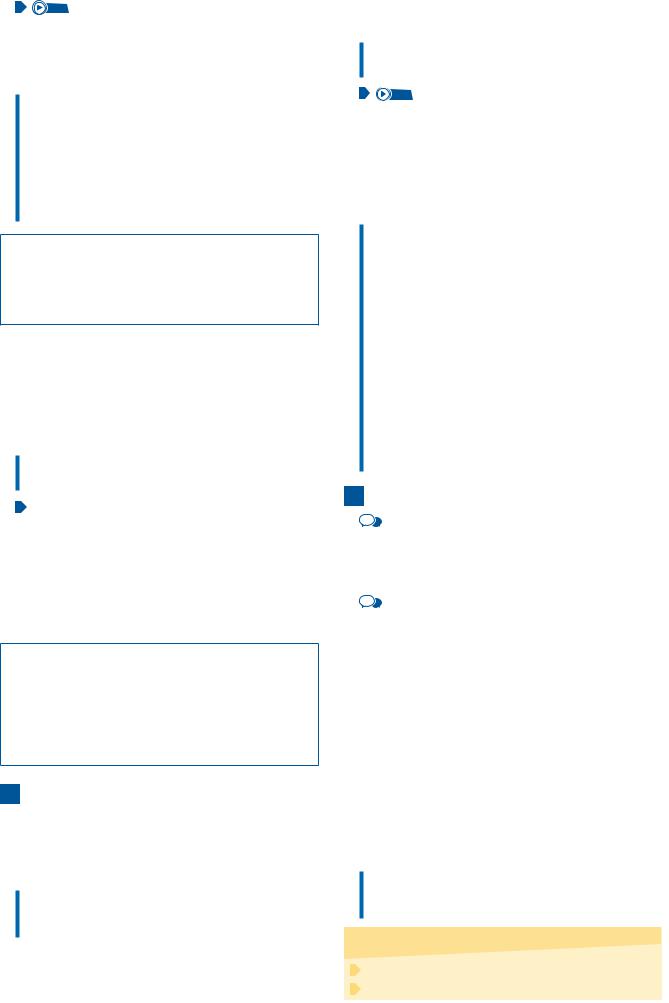
d |
3.35 Students read the information in Grammar |
Focus 11A on SB p.162. Play the recording where indicated and ask students to listen and repeat. Students then complete the exercises in Grammar Focus 11A on SB p.163. Check answers as a class. Tell students to go back to SB p.109.
Answers (Grammar Focus 11A SB p.163)
a |
1 which |
2 who |
3 where |
4 who |
5 which |
|
6 where |
7 which |
8 who |
|
|
b |
1 where |
2 who, which, that |
3 which, where |
||
|
4 who, which, that |
5 which, where |
6 who, which, that |
||
|
7 who, where |
|
|
|
|
c |
1 the actor who 2 the shoes that/which 3 a shop where |
||||
|
4 a device that/which 5 The man who |
||||
|
6 camera that/which broke |
|
|
||
 CAREFUL!
CAREFUL!
Students sometimes use what instead of that/which in relative clauses, e.g. This is one of the best films what stars Brad Pitt. (Correct form = This is one of the best films which/ that stars Brad Pitt.).
eRead through the examples with the class and elicit what they are describing. Write: It’s a person who ...
It’s a thing which ... on the board and say that these are very useful phrases for defining and explaining. Give the beginning of some definitions and elicit different possible endings from the class, e.g. a teacher is a person who ... (helps students to learn); a dictionary is a book that (you can look up new words in).
Suggested answers
A doctor, nurse |
B bed, (sofa) |
f Divide students into pairs and assign A and B roles.
Student A turns to SB p. 129. Student B turns to SB p.131. Explain that they need to describe the words for their partners to guess, using relative clauses. Allow two minutes for each student’s descriptions. Monitor and point out errors for students to self-correct. Ask some students to tell you some of their descriptions. Who described most things? Ask students to describe any remaining words as a class.
 EXTRA ACTIVITY
EXTRA ACTIVITY
In pairs, students role play a conversation between a teenager and a great-grandparent. The great-grandparent asks the teenager to explain some modern technology, e.g. What’s an email? How does a smartphone work?. The teenager describes the item for their great-grandparent. They then swap roles. Choose a pair to role play a conversation for the class.
3 VOCABULARY Compound nouns
aWrite the word driving licence on the board and ask whether it is a noun or a verb (a noun). Explain that nouns that are made up of two words like this are called compound nouns. Ask students to do the matching task and check answers as a class.
Answers
science fiction cash machines street lights television programme road sign
bGo through the words with the class and elicit whether each one is singular or plural. Establish that they are all in the singular form.
Answers singular
c |
3.36 Students complete the exercises in |
|
Vocabulary Focus 11A on SB p.140. Go through |
|
the two points in the Tip with the class and check |
|
understanding. Check answers to Exercise a. Play |
the recording where indicated for students to decide on the stressed syllables in Exercise b and repeat. Check answers to Exercises d and e and monitor the
conversations in Exercise f. Then tell students to go back to SB p.109.
Answers (Vocabulary Focus 11A SB p.140) |
|
||||
a |
1 shoe shop |
2 address book |
3 bookshelf |
4 ticket office |
|
|
5 key ring |
6 television programme |
|
||
|
7 street lights / streetlights 8 road sign 9 cash machine |
||||
|
10 science fiction |
|
|
||
b |
1 shoe shop |
2 address book |
3 bookshelf |
4 ticket office |
|
|
5 key ring |
6 television programme 7 street lights |
|||
|
8 road sign |
|
9 cash machine |
10 science fiction |
|
1 the first one |
|
2 science fiction |
|
|
|
dmountain top, mountain climbing, mountain centre; TV star, TV screen, TV game; bread knife; coffee cup; shopping bag, shopping centre; city park, city centre; kitchen knife, kitchen door; computer screen, computer game; tea bag, teacup; rock climbing, rock star; car park, car door; bottle top
e 1 computer games 2 TV screen / computer screen
3 rock climbing / mountain climbing 4 rock star / TV star 5 rock star / TV star
6 shopping centre / city park / computer game
4 SPEAKING
aAsk the class if anyone has recently bought or started used a new piece of technology and elicit more information about it. Ask individual students what was the last piece of technological equipment they bought and why they bought it.
bIndividually, students think about the inventions in the pictures and then compare answers with a partner.
cTake feedback as a class and compare different suggestions from the pairs about the gadgets. (top left) Smoke detectors are fitted to the ceiling inside a building. A smoke detector sounds an alarm when smoke is present. The alarm allows people to either prevent or escape a fire. Deaths due to fire have been reduced by 50% since smoke detectors became easily available. This smoke detector is in the shape of a bird
which ‘chirps’ to warn you of smoke. (top right) This is an induction hob. Electromagnets in the hob are used to heat pans by induction. This means only the pan heats up and not the hob, which is energy-efficient and safer. (bottom) This is a charging station. Phone chargers are put inside the box and covered with artificial grass. This keeps a number of different phone chargers in one place and looks more natural.
Answers
top left: smoke detector top right: induction hob bottom: charging station
ADDITIONAL MATERIAL
Workbook 11A
Photocopiable activities: Grammar p.224, Vocabulary p.248
150 UNIT 11 Discovery and invention
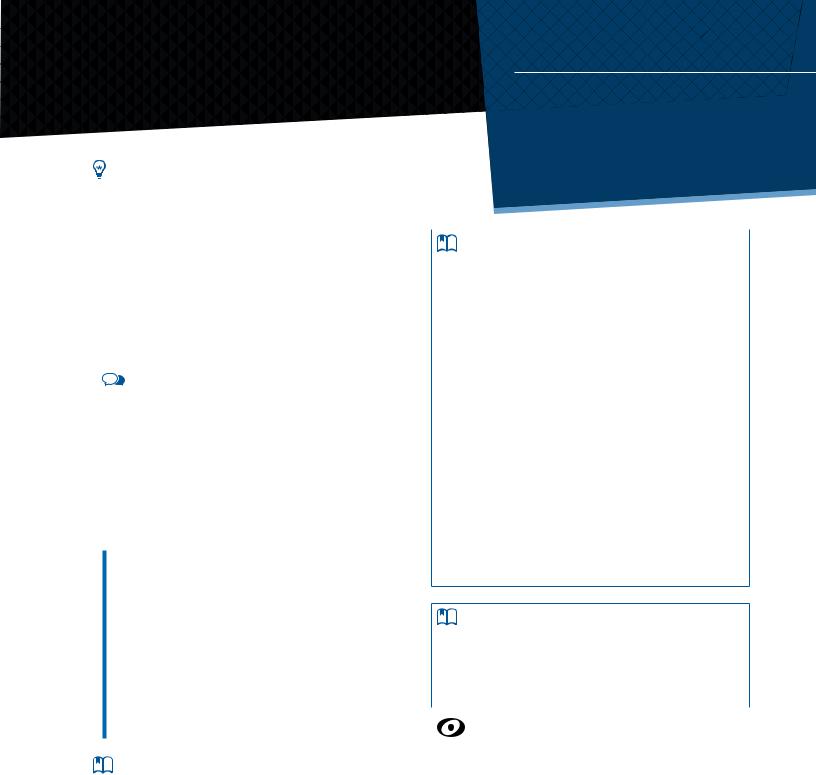
|
|
I think they discovered |
able to: |
||||
11B it by chance |
|
At the end of this lesson, students will be |
|||||
|
• use articles correctly |
||||||
|
|
|
|
|
• read and understand texts about discoveries |
||
|
|
|
|
|
• use adverbials related to luck and chance |
||
|
|
|
|
|
accurately |
||
|
|
|
|
|
• talk about discoveries and inventions |
||
|
|
OPTIONAL LEAD-IN |
|
|
|||
|
|
|
|
• relate experiences about unexpected events |
|||
|
Books closed. Play Backs to the board. Split the class into two |
|
|
|
|
||
|
teams. One student from each team sits with their back to |
|
|
|
|
||
|
the board. Write a word on the board. The students who can |
|
|
|
|
||
|
see the board must explain the word to their teammate who |
|
VOCABULARY SUPPORT |
||||
|
cannot see the board. They may not use their own language. |
|
|||||
|
|
archaeologist (C1) – someone who studies ancient cultures |
|||||
|
The person who guesses the word from their team’s clues |
|
|||||
|
|
by looking for and examining their buildings, tools, and |
|||||
|
wins a point for their team. Use these words in this game: |
|
|||||
|
|
other objects |
|
|
|||
|
statue, stone, metal, soldier, diamond, cave, painting, |
|
|
|
|||
|
|
bury (B1) – to put something into a hole in the ground and |
|||||
|
microwave, farmer, popcorn, climber. |
|
|||||
|
|
|
|
cover it |
|
|
|
|
|
|
|
|
|
||
|
|
READING |
clay – a kind of heavy, sticky earth, soft when wet and hard |
||||
|
1 |
||||||
|
when dry or baked, which is used for making pots and other |
||||||
|
|||||||
|
a |
Students match the headlines with the stories and |
objects |
|
|
||
|
|
pictures. Check answers as a class and ask which story |
curious (B1) – wanting to know or learn about something |
||||
|
|
they would like to read most, and why. |
dig (B1) – to make a hole in the ground by moving some of |
||||
|
Answers |
the earth away |
|
|
|||
|
1 |
second story 2 third story 3 first story |
hike – to walk a long distance especially in the countryside |
||||
|
b Ask students to read the stories and answer the |
melt (B2) – go from solid to liquid because of heat |
|||||
|
pop (C2) – sudden loud, short sound like a small explosion |
||||||
|
|
questions about each one. You may wish to help |
|||||
|
|
|
|
|
|||
|
|
students with words in the Vocabulary support box at |
popcorn (B1) – seeds of corn that have been cooked to break |
||||
|
|
this point. Check answers as a class. If you wish, give |
open into soft, light balls and are eaten as a snack |
||||
|
|
students information from the Culture notes below. |
radar – a system that uses radio waves to detect objects you |
||||
|
|
Answers |
cannot see |
|
|
||
|
|
Scientist discovers how to cook food in seconds |
terracotta – a hard, baked, red-brown clay |
||||
1Percy LeBaron Spencer
2working on radar for the army
3 |
the microwave oven |
LANGUAGE NOTES |
||
5,000-year-old body found in the Alps |
Some students confuse hope and expect. Explain that we use |
|||
1 |
Helmut and Erika Simon |
hope when we want something to happen and expect when |
||
2 |
hiking in the mountains in Italy |
|||
we think it will happen. Elicit some examples to show the |
||||
3 |
one of the oldest, most complete human bodies |
|||
meanings: I hope I pass the exam. (I’m not sure.) I expect I’ll |
||||
Farmers uncover ancient army in the fields |
||||
pass the exam. (I think I will.) |
||||
1 |
local farmers |
|||
|
||||
2 |
digging and looking for water |
|
||
CAREFUL! |
||||
3 |
thousands of clay/terracotta soldiers buried underground |
|||
|
|
|
• When we use a compound noun as an adjective like |
|
|
LANGUAGE NOTES |
|
this, all nouns remain in the singular form singular, e.g |
|
Point out the difference between inventions and discoveries. |
|
a multi-words verb (Correct form = a multi-word verb); |
||
|
a 5,000-years-old body (Correct form = a 5,000-year-old |
|||
Inventions are things that people create/imagine/build. |
|
|||
|
body); a ten years old boy (Correct form = a ten-year-old |
|||
Discoveries are things that already existed but we find out |
|
|||
|
boy, BUT The boy was ten years old); a five pages-story |
|||
about them. |
|
|||
|
(Correct form = a five-page-story). |
|||
|
|
|
||
|
|
|
• In headlines, articles (and auxiliaries) are often left out, |
|
|
|
|
e.g. 5,000-year-old body discovered in Alps! = A 5,000-year- |
|
|
|
|
old body has been discovered in the Alps. |
|
UNIT 11 Discovery and invention 151
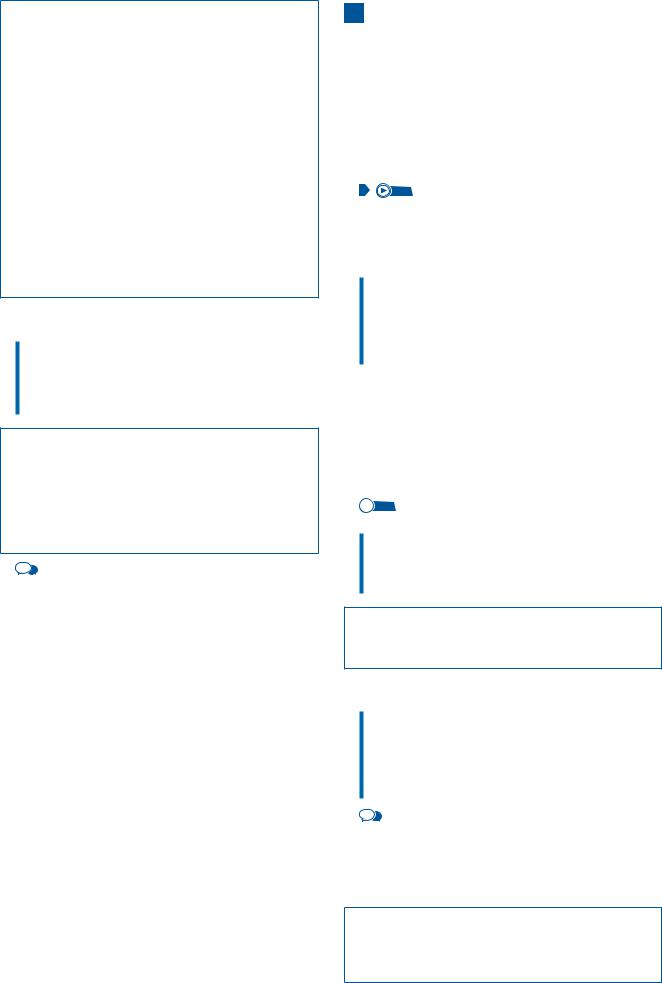

 CULTURE NOTES
CULTURE NOTES
Percy LeBaron Spencer created the first microwave oven in 1947. It was about two metres tall and weighed 340
kilograms. It cost between $2,000 and $3,000. It wasn’t until 1967 that an affordable microwave was on sale for $495. Spencer didn’t profit from his invention – he was paid a fee of $2.00 by his company!
Ötzi the Iceman is thought to have been 1.65 metres tall, about 50 kilograms in weight and about 45 years old. Scientific tests have shown where he lived and what his last meals were – red deer, herb bread, grain and fruits. They also show that he looked old for his age, had been quite ill just before his death and that he had tattoos. He was wearing a coat, leggings and well-made shoes.
The Terracotta Army includes soldiers and horses and are representations of Qin Shi Huang, the first Emperor of China. It is believed that the army is a kind of funeral art and that it was buried with the Emperor to protect him after death.
cStudents read the texts again and answer the questions individually. Check answers as a class.
Answers
1He put a small bowl of popcorn in front of the machine.
2They thought that it was the body of an unlucky mountain climber. They tore the clothes and broke one arm.
3They believe most of them are still buried underground.
 EXTRA ACTIVITY
EXTRA ACTIVITY
Write on the board: 700,000 / 6,000 / 1991 / 5,000 / 2,200 and ask students what the numbers refer to in the text.
(700,000 people who helped make the army; 6,000 – approximate number of figures; 2,200 – the terracotta army was made 2,200 years ago; 1991 – 5,000 – age of body when the body of the Iceman was discovered)
d In pairs, students discuss the questions before you take feedback as a class. Take a class vote on the order of the importance of the discoveries and elicit some ideas from the group about important discoveries in their lifetimes.
2 GRAMMAR Articles
aBooks closed. Read the first sentence, leaving out some of the articles: He put … small bowl in front of the machine. It started popping and jumping out of … bowl.
Ask students what words are missing (a, the) and what we call this kind of word (articles). Read through the sentences and rules and ask students to match them individually. Check answers as a class.
|
Answers |
|
|
a 6 |
b 3, 4 c 1 d 2, 5 e 7 |
|
|
3.37 Students read the information in Grammar |
b |
||
Focus 11B on SB p.162. Play the recording where indicated and ask students to listen and repeat. Students then complete the exercises in Grammar Focus 11B on SB p.163. Check answers as a class. Tell students to go back to SB p.111.
Answers (Grammar Focus 11B SB p.163) |
|
|
||||||
a |
1 A |
2 Ø 3 the |
4 A |
5 An |
6 a |
7 a |
8 Ø |
9 the |
|
10 An |
|
|
|
|
|
|
|
b |
1D |
2D 3S 4S |
5D |
6S |
|
|
|
|
c |
1 Ø |
2 Ø 3 a |
4 the |
5 a |
6 a |
7 The |
8 Ø |
9 a |
|
10 The 11 a 12 the |
13 the/Ø |
|
|
|
|||
cAsk students to look at the picture and title and tell you what the picture shows. Ask: What do you think the article will be about? Students read the article to check their ideas. Ask: Which articles could we add to the title?
(a new species, on the menu). Ask: Which auxiliary could we add? (was discovered) Students then read the text and complete it with the correct articles. They do this individually and then compare answers with a partner.
d 3.38 Play the recording for students to check their answers.
3.38 Play the recording for students to check their answers.
Answers |
|
|
|
|
1 the |
2 a 3 a |
4 a |
5 a 6 the |
7 the |
8 the |
9 the 10 a 11 no article |
12 a |
||
13 the |
14 the |
15 the |
16 the 17 a |
|
 VOCABULARY SUPPORT
VOCABULARY SUPPORT
bench (B2) – long seat for two or more people nearby (B1) – not far away
eStudents answer the questions in pairs. Take feedback and check answers.
Answers
1 Ngo Van Tri
2 he thought they looked unusual; to send to a biologist in America 3 by plane
4 The lizards were cooked and eaten. 5 in a nearby restaurant
f Students work in pairs. Ask them to take turns covering the story and using the prompts to retell it. Monitor and correct students’ pronunciation as
appropriate and listen for appropriate usage of articles.
Point out errors for students to self-correct where necessary.
 EXTRA ACTIVITY
EXTRA ACTIVITY
Ask students if they have ever eaten lizards. What other unusual things do students eat in their countries? What would they never eat? Why?
152 UNIT 11 Discovery and invention

3 VOCABULARY
Adverbials: luck and chance
aWrite the highlighted adverbials from the four stories on the board. In pairs, students discuss the meanings. Check their ideas as a class. Use some of the adverbials in sentences and concept check. Keep the adverbials on the board to refer to later.

 LOA TIP CONCEPT CHECKING
LOA TIP CONCEPT CHECKING
Use concept questions to check the understanding of the adverbials in the sentences you have on the board. For example, to check the meaning of by chance in the sentence I met James by chance in the station, ask: Did I arrange to meet James? (no) Was it a surprise to meet James? (yes)
Answers
as expected – this was something we thought was going to happen by chance – it wasn’t planned
accidentally – it wasn’t planned amazingly – it was a real surprise fortunately – it was a good/lucky thing surprisingly – it was a surprise
on purpose – it was planned
unfortunately – it was a bad / an unlucky thing luckily – it was a lucky thing
 CAREFUL!
CAREFUL!
Watch out for mistakes: unfortunatly or unfortunatelly. (Correct spelling = unfortunately.)
bIndividually, students search the texts for the opposites of the words and phrases in the table. They compare their answers with a partner before you check as a class.
Answers |
|
1 fortunately |
2 luckily 3 by chance |
4 accidentally |
5 amazingly 6 surprisingly |
c  3.39 In pairs, students take turns to practise pronouncing the words out loud. They underline where they think the main stress falls. Play the recording for them to listen, check their answers and repeat.
3.39 In pairs, students take turns to practise pronouncing the words out loud. They underline where they think the main stress falls. Play the recording for them to listen, check their answers and repeat.
Answers
luckily, fortunately, accidentally, by chance, unfortunately, surprisingly, amazingly, on purpose, as expected
dRead through the task with the class and give students a couple of minutes to prepare their sentences using three of the phrases from c. Monitor and help with vocabulary as necessary.
eTake feedback and ask students to share some of their examples with the class. Find out which student has written about the most interesting/amusing/ frightening occasion.
 EXTRA ACTIVITY
EXTRA ACTIVITY
In pairs, students take turns to make up a sentence and give an adverbial to begin the next sentence for their partner to complete, e.g. I opened the classroom door. Surprisingly ...
(the room was empty). Take feedback and ask students to share some examples with the class.
4 SPEAKING
a  Divide the class into pairs and assign A and B roles.
Divide the class into pairs and assign A and B roles.
Student As read the texts on SB p.128 and Student Bs read the texts on SB p.132. Explain that they are each going to read about three different accidental discoveries. They can use their dictionaries to check the meaning of any unfamiliar words. Monitor and help with vocabulary as necessary. Students tell their partners their three stories. One of the stories is not
true and the pairs decide together which one it is. Take feedback as a class and ask students to share their ideas and say why they think the stories they have chosen are untrue. Give the answers from SB p.131.
Answers
Car keys were not invented by an American businessman called Spencer.
The exercise bike was not invented by Hans Weger.
ADDITIONAL MATERIAL
Workbook 11B
Photocopiable activities: Grammar p.225, Vocabulary p.249
UNIT 11 Discovery and invention 153
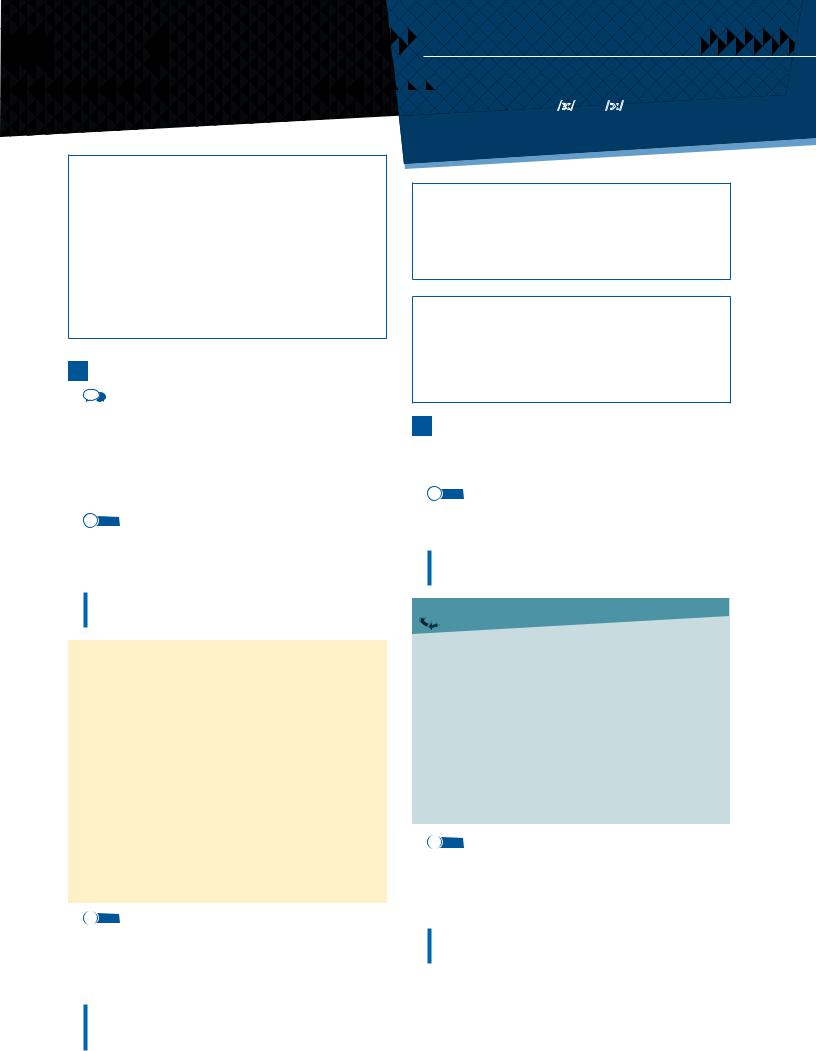



 11C
11C Everyday English
Everyday English









 It’s straight ahead
It’s straight ahead 



 At the end of this lesson, students will be able to:
At the end of this lesson, students will be able to:





• use phrases to ask for and give directions in a building


 •
• check information
check information
• diff erentiate between /ɜː/ and /ɔː/
between /ɜː/ and /ɔː/
•understand someone asking for and being given directions
 OPTIONAL LEAD-IN
OPTIONAL LEAD-IN
Write sat nav on the board. Ask students if they have a sat nav in their car. Ask: Is a sat nav an essential invention? Should you have one in your car? Divide the class into small groups. Some of the groups think of reasons why sat navs are essential, e.g. You can find new places. You don’t need to stop to look at a map. Some of the groups think of reasons why the sat nav is not a good invention, e.g. You can look at road signs instead. It is dangerous to take your eyes o the road. Sat navs are always out-of-date. Set up short debates between the groups. Now take a class vote on students’ real opinions.
1 LISTENING
aAsk the class if they are good at knowing where they are and elicit examples from individual students of what they would do if they got lost in a town or city. In pairs, students ask and answer the questions. Encourage them to give details and extend their answers. Take feedback as a class on the most interesting items their partners talked about. Extend by asking how many students have apps on their phones to fi nd the way and how useful these are.
b 3.40 Ask students to tell you what has happened to Annie in the story so far and the reason why she has come to visit Mark at his office. Play Part 1 of the video or play the audio recording for the class to fi nd out why she gets lost. Check the answer together.
3.40 Ask students to tell you what has happened to Annie in the story so far and the reason why she has come to visit Mark at his office. Play Part 1 of the video or play the audio recording for the class to fi nd out why she gets lost. Check the answer together.
Answer
Annie can’t remember the receptionist’s directions to Mark’s office.
Video/audioscript (Part 1)
ANNIE Excuse me. Can you tell me where the reception is?
PERSON It’s over there, by the trees. Can you see the
doors? And the sign that says reception.
A Oh, yes. Thanks very much. P You’re welcome. RECEPTIONIST Good afternoon.
A Hello. I’m here to see Mark Riley. R What’s your name, please?
A It’s Annie Morton.
ROK, I’ll let him know you’re here. Oh, hello Mark, it’s Sandra here at reception. I’ve got Annie Morton here to see you. OK, thanks. Bye. Yes, he’s
expecting you. He said you can go up to see him. Have you been to his office before?
A No.
ROK. It’s on the first floor. So, go up the stairs and turn left. Go through the door and turn right. Then go down the corridor and it’s the first door on the right.
A Fine. Thank you.
AUDIO ONLY
ASorry, I got lost. Could you tell me where the office is again, please?
RYes, of course. So, first go up the
...
c  3.40 Elicit from students what they can remember about the directions that the receptionist gives Annie. Write any phrases they manage to produce on the board. Then play Part 1 of the video or play the audio recording again for the class to complete the directions in 1c. Check answers as a class.
3.40 Elicit from students what they can remember about the directions that the receptionist gives Annie. Write any phrases they manage to produce on the board. Then play Part 1 of the video or play the audio recording again for the class to complete the directions in 1c. Check answers as a class.
Answers |
|
||
1 |
first |
2 |
up 3 left 4 door 5 right 6 down |
7 |
first |
8 |
right |
 LANGUAGE NOTES
LANGUAGE NOTES
Make sure that students know the words and phrases: first floor ground floor top floor corridor
In many countries, first floor is the same as ground floor in the UK.
 EXTRA ACTIVITY
EXTRA ACTIVITY
Give students two minutes to memorise the directions in 1c. Students role play the conversation between Annie and the receptionist. The receptionist gives instructions and Annie mimes following them. Then students swap roles. Monitor and point out errors for students to self-correct.
2 USEFUL LANGUAGE
Asking for and giving directions in a building
a  3.41 Ask students to complete the question, and then play the recording to check. Check the answer as a class and focus on the position of the verb (is) at the end of the sentence.
3.41 Ask students to complete the question, and then play the recording to check. Check the answer as a class and focus on the position of the verb (is) at the end of the sentence.
Answer
Excuse me, can you tell me where the reception is?

 LOA TIP DRILLING
LOA TIP DRILLING
Give a short transformation drill to practise the structure, e.g.
Say: Reception. Can you tell me where the reception is?
(Gesture for students to repeat.)
Students: Can you tell me where the reception is? Say: Mark’s o ice
Students: Can you tell me where Mark’s o ice is? Say: the language lab
Students: Can you tell me where the language lab is? Say: the cafeteria
Students: Can you tell me where the cafeteria is?
b  3.42 Individually, students match the phrases with the pictures. Play the recording for them to check their answers. Play it again or model the phrases yourself for students to repeat. Ask them to underline the stressed word or words in each sentence and to pay attention to correct sentence stress and intonation.
3.42 Individually, students match the phrases with the pictures. Play the recording for them to check their answers. Play it again or model the phrases yourself for students to repeat. Ask them to underline the stressed word or words in each sentence and to pay attention to correct sentence stress and intonation.
Answers
1 b 2 f 3 c 4 g 5 h 6 d 7 a 8 i 9 j 10 e
cIn pairs, students take turns to cover the phrases and remember the directions for each picture. Uncover and check.
154 UNIT 11 Discovery and invention
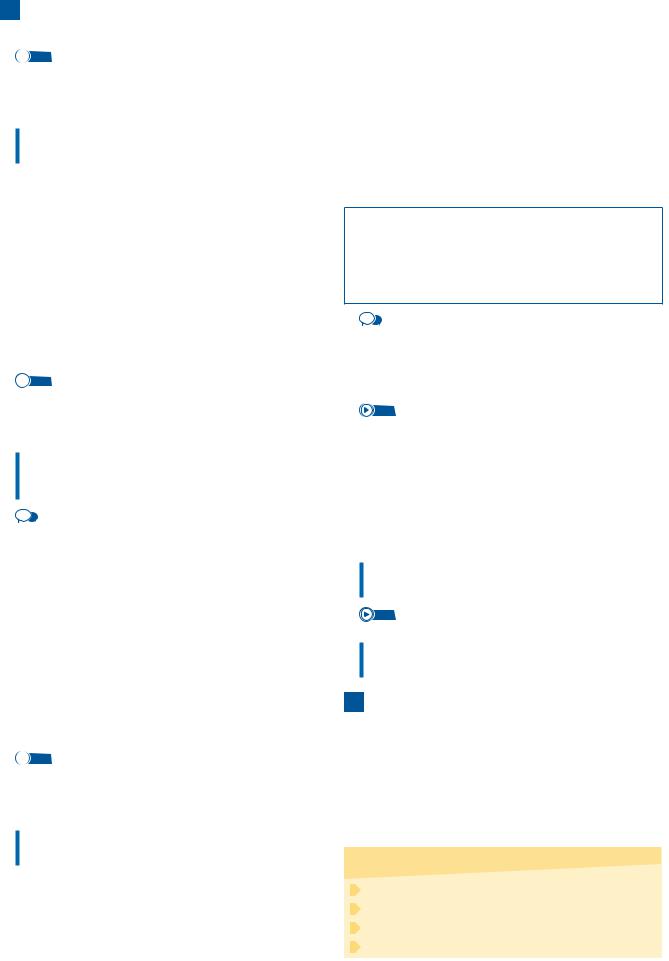
3 CONVERSATION SKILLS
Checking information
a  3.43 Ask the class what they think Annie does next after she gets lost and elicit some ideas – e.g. she goes home, she goes into another office to ask directions, she goes back to reception, etc. Then play Part 2 of the video or play the audio recording for them to check their ideas.
3.43 Ask the class what they think Annie does next after she gets lost and elicit some ideas – e.g. she goes home, she goes into another office to ask directions, she goes back to reception, etc. Then play Part 2 of the video or play the audio recording for them to check their ideas.
Answer
She goes back to (the) reception (and asks again).
Video/audioscript (Part 2) |
|
|
ANNIE Sorry, I got lost. Could you |
A Sorry, the fourth office? |
|
tell me where the office is again, |
R |
No, the first. |
please? |
A Right, I think I’ve got that. |
|
RECEPTIONIST Yes, of course. So, first |
R |
Good. |
go up the stairs to the first floor |
A So can I just check? Go up the |
|
and turn left. Then go through |
|
stairs and turn right … |
the door and turn right. |
R |
No, turn left. |
A So go up the stairs to the first |
A Left! Then go through the door |
|
floor and turn left. Then go |
|
and turn left … no … right. |
through the door and turn right. |
R |
That’s it. |
R Yes. Then go down the corridor |
A |
Thanks very much |
and it’s the first office on the right. |
|
|
|
|
|
b  3.44 Students read and listen to the three exchanges based on the conversation and match the underlined phrases with their uses. Check answers as a class. Then play Part 2 of the video or play the audio recording again for students to listen and repeat the conversations.
3.44 Students read and listen to the three exchanges based on the conversation and match the underlined phrases with their uses. Check answers as a class. Then play Part 2 of the video or play the audio recording again for students to listen and repeat the conversations.
Answers
to check information by repeating it: 1, 2, 4 to show we understand: 3
cChoose a place in the building you are in and direct students to it. e.g. Go out of the classroom and turn right. Go down the corridor and turn left. Go down the stairs and through the big glass doors at the bottom. Where are you? Elicit the correct answer, then tell the class that you are going to direct them again, but this time you want them to check the information and show they understand, using the phrases in b. Repeat the directions, pausing where appropriate to elicit the checking or confirming phrases from the class. Then give students a couple of minutes to prepare their own directions. They take turns to read their phrases to their
partner who listens and repeats the information to check it’s correct. Monitor and correct students’ pronunciation as appropriate and listen for correct use of the target phrases.
d 3.45 Tell students that now they’re going to hear the conversation between Mark and Annie. Look at the question and play Part 3 of the video or play the audio
3.45 Tell students that now they’re going to hear the conversation between Mark and Annie. Look at the question and play Part 3 of the video or play the audio
recording for students to answer. Check the answer as a class.
Answer
Mark thinks Annie has a good chance.
Video/audioscript (Part 3) |
|
|
MARK Obviously, I can’t promise |
M OK. |
|
anything. But I think you’ve a |
A |
Oh, and have fun at the gym |
really good chance of getting a |
|
with Leo tomorrow! |
job here. |
M Thanks. I’m sure it’ll be good. |
|
ANNIE Thanks, Mark! That’s great. |
|
Do you want me to walk down |
You’ve helped me so much. |
|
with you or …? |
M Not at all. You’ve got a really |
A |
No, it’s OK – I know the way out. |
good CV and lots of experience. |
|
Thanks again. |
I’m sure my boss will be very |
M Not a problem. See you soon. |
|
impressed. |
A |
Bye. |
A I hope so! Anyway, I’ll let you get |
M Bye. |
|
back to your work now. |
|
|
|
|
|
 VOCABULARY SUPPORT
VOCABULARY SUPPORT
a good chance of – quite likely that
CV (B1) – document that describes your education and experience
impressed (B2) – think something is very good
e |
Ask the class whether they would give Annie a job |
|
at their company and elicit reasons as to why or why not. |
|
PRONUNCIATION |
4 |
|
|
Sound and spelling: /ɜː/ and /ɔː/ |
a |
3.46 Tell the class that they are going to hear two |
words with different vowel sounds. Play the recording for students to listen and repeat. Contrast the two sounds /ɜː/ and /ɔː/ for students to repeat after you in chorus. Do this several times to give them practice in producing as well as hearing the sounds.
bIn pairs, students take turns to say the pairs of words, circling the word with the /ɜː/ sound. Check answers as class. Model the word pairs for students to repeat after you.
|
Answers |
|
1 third 2 Thursday 3 thirty 4 work 5 bird |
c |
3.47 Play the recording for students to circle the |
words they hear. Check answers as a class.
Answers
1 fourth 2 Thursday 3 thirty 4 work 5 board
5 SPEAKING
Ask the class to look at the plan of the building and go through the key with them. Check understanding of any words they do not know. Students work in pairs and take turns to ask for and give directions from the entrance of the school. Remind them to check and confirm information. Monitor and correct students’
pronunciation as appropriate and listen for correct usage of the target language from this lesson.
ADDITIONAL MATERIAL
Workbook 11C
Photocopiable activities: Pronunciation p.285, 286 Unit Progress Test
Personalised online practice
UNIT 11 Discovery and invention 155
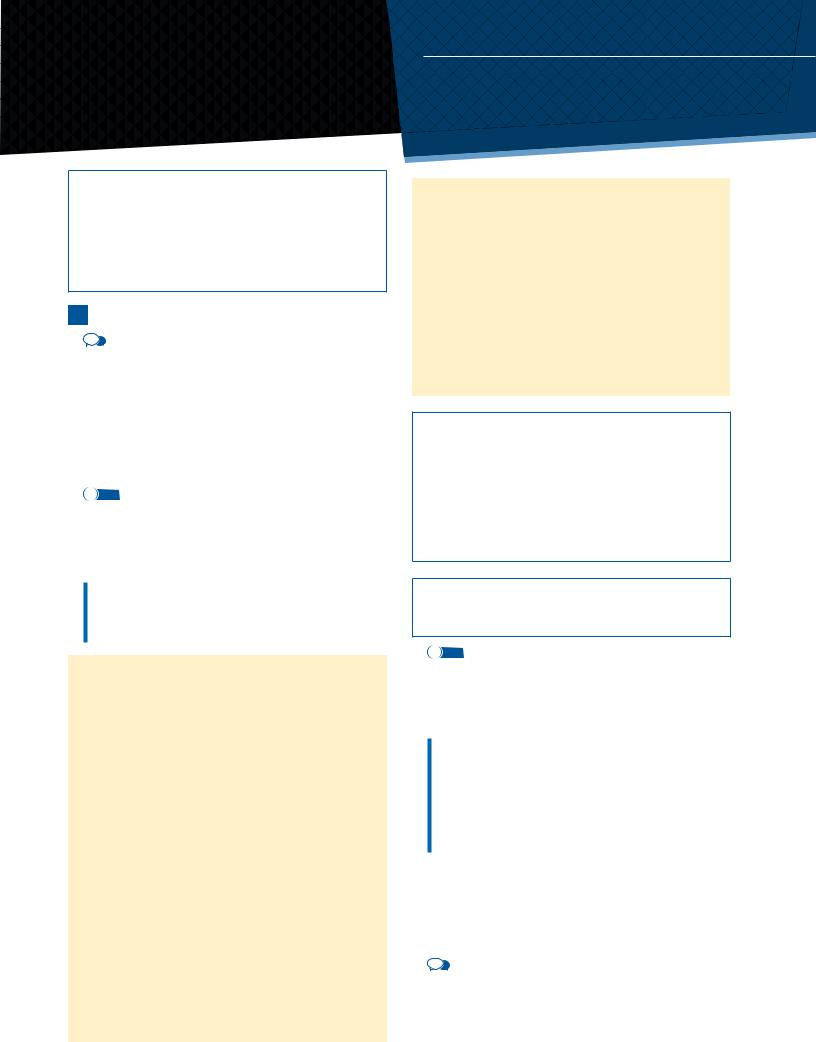
Skills for Writing |
• understand people talking about inventions |
11D In my opinion, it’s because |
At the end of this lesson, students will be able to: |
• use phrases to give opinions, results and reasons |
|
|
• read and understand a text about inventions |
of the Internet |
• write a web post giving an opinion |
 OPTIONAL LEAD-IN
OPTIONAL LEAD-IN
Books closed. Individually, students write down an invention that they have used today and think about how their lives would be different without it. Students share their ideas with the class, e.g. My alarm clock is an excellent invention. Without it, I might still be in bed! Or my mum would need to wake me up every day.
1 LISTENING AND SPEAKING
aAsk students: Is there one new invention that would have helped you today? Students can talk about this in pairs and then tell the class in feedback, e.g. a time machine to get them to school faster. Ask students to look at the pictures and talk about what they can see and what kinds of inventions they might be. Elicit or point out that the man is saying Hello! How are you? in
Spanish. Take feedback as a class and write on the board students’ diff erent ideas about what the three inventions might be.
b 3.48 Tell students that they are going to hear people on a radio programme talking about the inventions in the pictures. Play the recording for the class to listen for
3.48 Tell students that they are going to hear people on a radio programme talking about the inventions in the pictures. Play the recording for the class to listen for
general meaning and to complete the fi rst row of the table with the invention each person talks about. Check answers as a class.
HThanks, Utta. Artificial meat! Wow, that sounds scary … Anyhow, last up we have Pierre. Hi, Pierre.
PIERRE Hi.
H So Pierre, tell us about your idea for a great invention.
PWell, a really useful invention I read about was a device that you could put in your ear and it would translate languages for you. You wouldn’t need to study for hours and hours to learn a foreign
language. You could just put it in your ear when you went on holiday to foreign countries and you’d understand everything everyone was saying to you. It would help people to communicate and would be very useful for business people or for politicians. But it wouldn’t
be very good news for teachers. Fortunately, for them, it’s probably impossible to make such a device, or at least it will take many years.
HCool. I’d love that invention! Thanks for those great ideas. Who knows which of them will happen! We can only wait and see!
 VOCABULARY SUPPORT
VOCABULARY SUPPORT
artificial (B2) – not natural or real
device (B2) – a piece of equipment that is used for a particular purpose
laboratory (B1) – a room used for scientific work
pollution (B1) – damage caused to water, air, etc. by harmful substances or waste
run (on) (C1) – uses a supply of power to work
Answers
Amir – new kind of car engine
Utta – artificial meat
Pierre – device to put in ear to translate languages
Audioscript
HOST Hi, welcome to the show. Today we’re looking at great inventions for the future. What really useful inventions do you think we need? People have called in to the show to tell us their ideas. First up we have Amir. Hi, Amir.
AMIR Hi.
H So Amir, tell us about what invention you’d like to see.
AI think the most important invention we need is a new kind of car engine that doesn’t need petrol. There are too many cars in the world already, and as countries become richer, more and more people will want a car. That will be terrible news for the environment. But imagine a world with clean cars and no more pollution to worry about! I’m sure it will be invented soon. We
already have electric cars, but I think it will be something different, maybe something like a car that runs on air. I’m sure someone will invent something to solve the problem. I hope so, anyway.
HThanks, Amir. That’s a great invention. Next on the line we have Utta. Utta, tell us about your invention.
UTTA Hi, well, one really useful invention would be artificial meat that’s cheap and tastes good and which doesn’t need cows, sheep or chickens to produce it. It sounds like science fiction, but in fact
they’ve already invented it in a way. Amazingly, they’ve produced beef in a laboratory, but it cost thousands of pounds to make. But that’s the same with all new inventions; they’re always expensive at the start. So, I think it will happen and it’ll be really good, because all the fields we use to grow food for cows could be used for something else
– to grow vegetables or plant trees, for example.
 LANGUAGE NOTES
LANGUAGE NOTES
The host uses idiomatic phrases to sequence the people he talks to: First up (Firstly) and Last up (Lastly/Finally).
c  3.48 Read through the remaining two questions in the table. You may wish to help students with the items in the Vocabulary support box at this point. Then play the recording again for students to complete the rest of the table. You may need to play the recording more than once. Check answers as a class.
3.48 Read through the remaining two questions in the table. You may wish to help students with the items in the Vocabulary support box at this point. Then play the recording again for students to complete the rest of the table. You may need to play the recording more than once. Check answers as a class.
Answers
Amir – clean cars so no more pollution; yes (someone will invent something to solve the problem)
Utta – cheap, tastes good, fields used for growing food for cows can be used for something else; yes (I think it will happen and it’ll be really good)
Pierre – no need to study, would help people to communicate; no (it’s probably impossible or will take many years)
dIndividually, students decide if they think the inventions are a good idea or not and why and any other ways they might be able to think of to solve the same problem. Give them a couple of minutes to do this and tell them to make notes about their ideas – at least two or three lines for each invention.
eIn small groups, students compare their ideas
from d. Monitor and help with vocabulary as necessary.
Take feedback as a class and ask diff erent groups to summarise their ideas and suggestions regarding each invention. If you wish, give students information from the Culture notes below.
156 UNIT 11 Discovery and invention
